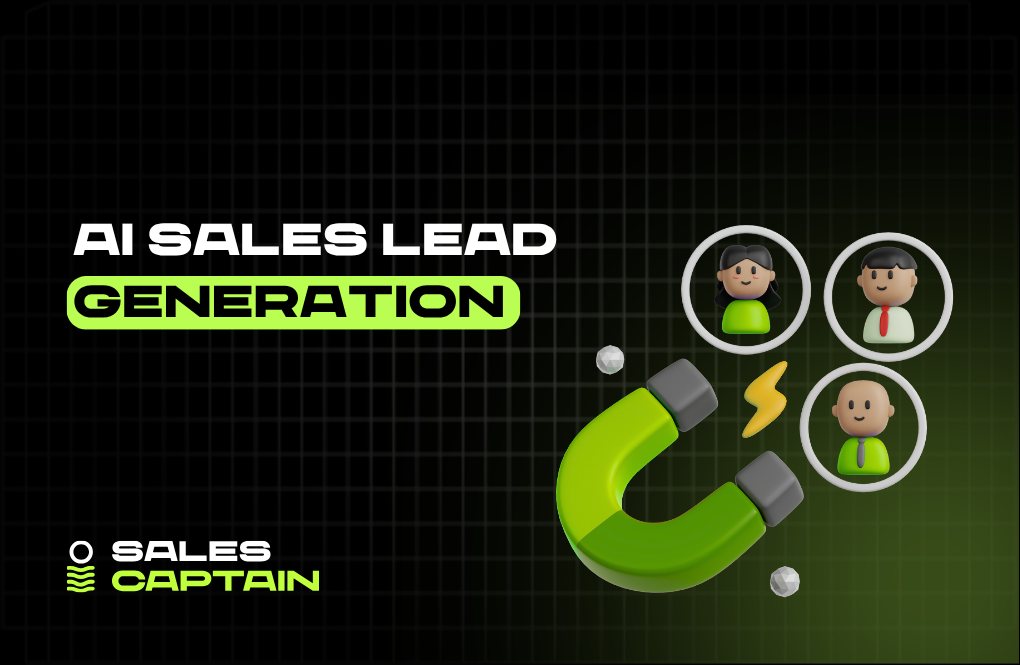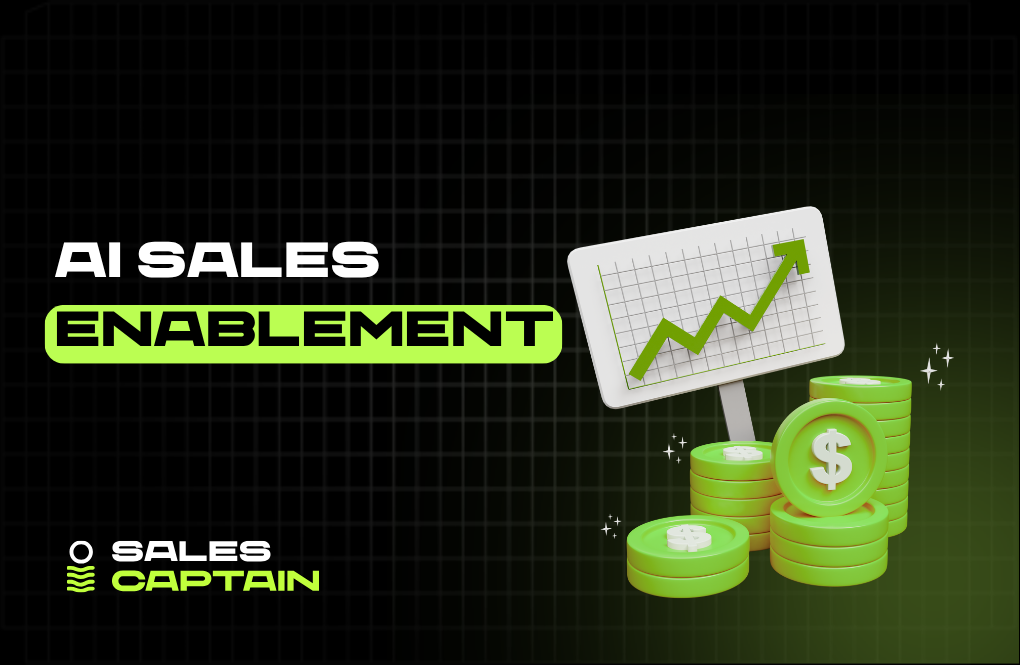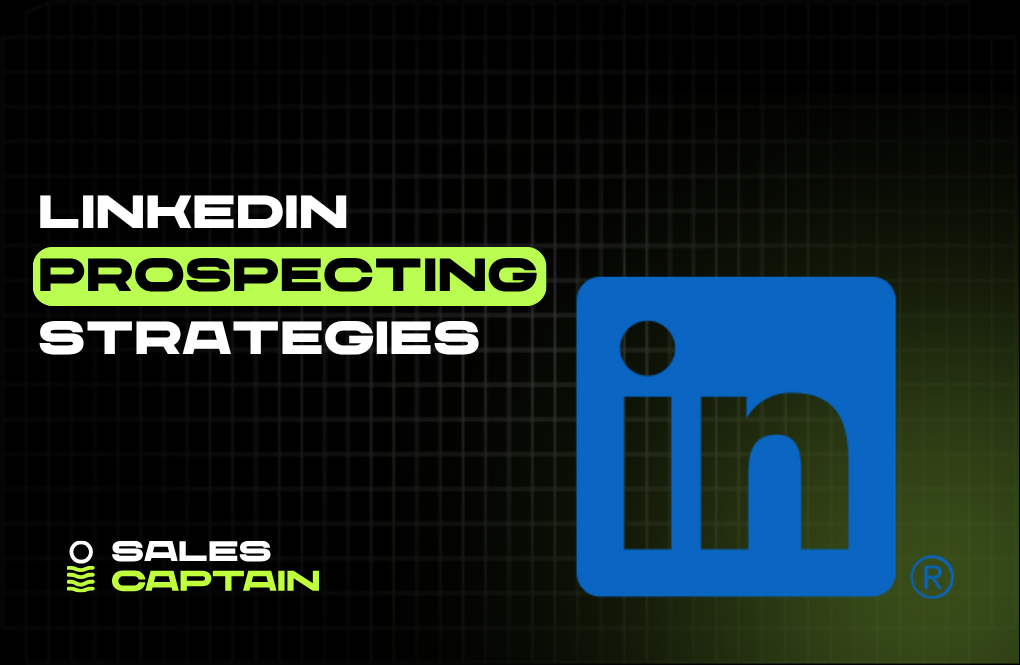

Buying Signals: How to Spot, Interpret, and Act on Real Purchase Intent

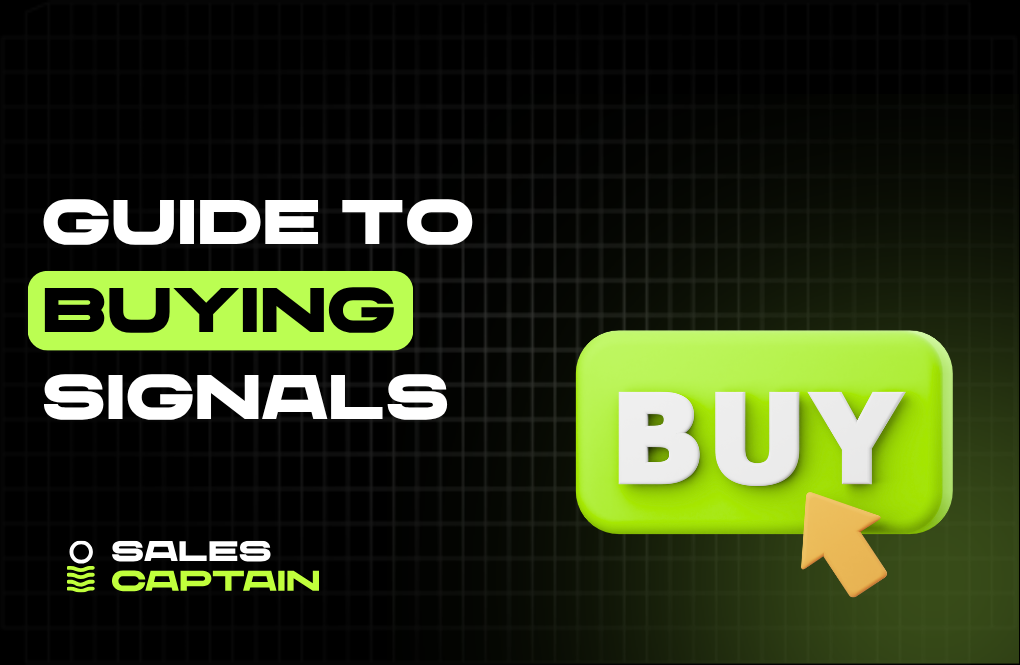
Buying signals are the small cues that reveal when a prospect is ready to make a decision. These signs can be as obvious as visiting your pricing page or as subtle as opening an email multiple times. When you understand how to identify and interpret buying signals, you stop guessing and start acting with purpose.
This approach helps your sales team focus on prospects who are truly interested, leading to faster responses and higher close rates.
What Are Buying Signals?
Understanding the Concept
Buying signals are behavioral cues that reveal a prospect’s readiness or intent to make a purchase. You’re not just looking for someone interested. You’re tracking the micro-movements that indicate they’re moving toward a decision: emails opened three times, pricing page revisits, asking deeper questions, and checking case studies. Signals live inside these actions.
They’re not always loud. Sometimes it’s a second reply in a cold email thread. At other times, it’s a subtle LinkedIn profile view. Signals don’t present themselves. You have to know how to pay attention.
Distinction Between Sales and Marketing Signals
Sales buying signals are closer to the transaction. Prospects asking about pricing, timeline, competitors, or decision-makers, it’s smoke before fire. These tend to occur in conversations, calls, or replies to cold outreach.
Marketing signals sit earlier in the funnel. They’re softer, but just as telling. Someone bingeing your thought leadership, downloading a gated report, or sharing your content on social, it’s movement with intent, but still pre-pitch.
In a Go-To-Market system, understanding the blend matters. Outbound is no longer owned by sales alone. Marketing sets up signals. Sales chases them. AI makes this loop real-time.
Why Are Buying Signals Important?
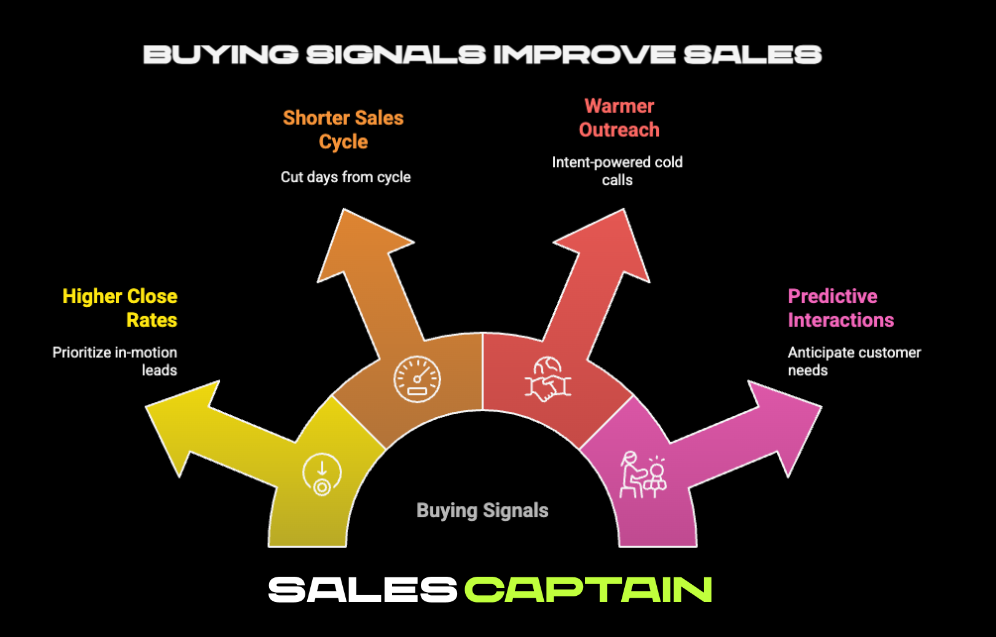
Impact on Sales Strategies
Most sales strategies fail because they're built around volume, not timing. Buying signals shift that. They let reps prioritize people who are actually in motion. This doesn’t just improve close rates; it cuts days out of the cycle.
And when outbound is powered by intent, even cold outreach hits warm. With buying signals, you no longer guess who to follow up with. You know.
That’s why technical GTM operators are replacing SDRs. Tools track signals. Workflows act on them. Humans close.
Improving Customer Relationships
Buying signals aren’t just about closing deals. They’re how you show up at the right time, with the right thing. Misaligned follow-ups kill trust. But if you message a lead just as they’re researching your competitor? You’re adding value, not asking for attention.
The same goes post-sale. Tracking signal data helps successful teams spot renewal opportunities or expansion moments before they’re visible.
Signals shift interactions from reactive to predictive. You earn trust by anticipating needs rather than reacting to pain.
How to Identify Buying Signals
Analyzing Verbal Cues
Prospects often reveal intent without saying, “I’m buying now.” Listen for things like:
- "How much does this cost?"
- "What’s the onboarding like?"
- "Who else have you worked with in my space?"
- "Can you send that to my boss?"
These aren't curiosity questions. They suggest momentum. If you're in a call, tone and pace matter just as much. Urgency in their voice. Excitement when describing use cases. These are signals hiding in plain sight.
Sales isn't about convincing. It's about recognizing when they’ve convinced themselves and getting out of the way.
Observing Non-Verbal Cues
Non-verbal signals live in the shadows. Micro-behaviors like:
- Frequent clicks on your email signature link
- Viewing your deck multiple times
- Returning to the comparison section on your site
- Attending your webinar but staying anonymous
These actions don’t say “I'm ready,” but they nudge in that direction. In cold outreach, a prospect ignores your first two emails, but clicks the third and forwards it? That's not a no. That’s interest disguised as silence.
Mapping these cues takes a mix of intuition and infrastructure. Tools help. But curiosity still wins.
Leveraging Technology for Insight
Manual signal tracking breaks at scale. That’s where platforms like Clay come in. Clay connects your GTM systems, email, CRM, and website traffic and turns scattered signals into usable data. You get 3,000 free credits with our link, which makes it easy to test workflows.
It’s not just about triggering follow-ups. It's about weaving signals into your outreach sequencing logic. For example, Clay can automatically move a lead into a warm cadence if they open your last three emails or spend time on the pricing page.
The tech gives you the signal clarity. Your workflow dictates the action. That’s the modern GTM flywheel.
Types of Buying Signals to Watch For

Common Sales Buying Signals
Direct questions. Budget talk. Procurement involvement. These are loud signals. But there are subtle ones too:
- Asking about your competition
- Replying at off hours
- Sending more than one schedule link option
- Involving more stakeholders after a demo
The point isn't just to note these moments. It's to systematize responses. If a prospect suddenly CC's their CFO, your next step shouldn’t be another generic follow-up. It should be ROI-centric messaging, possibly even a separate stream meant for finance personas.
Sales buying signals aren’t just notes on a call. They’re levers. Pull the right one at the right time, and he deal accelerates.
Notable Marketing Buying Signals
Marketing signals rarely arrive with fireworks. They're breadcrumbs. Someone:
- Subscribes to your newsletter and reads every issue
- Downloads a case study and then a competitor comparison guide
- Share your podcast with others on LinkedIn
This kind of behavior rarely gets noticed unless you’re tracking patterns at scale. Marketing automation tools see the volume. But operators who route those patterns into sales pipelines? That’s how demand converts fast.
This is why outbound agencies like SalesCaptain thrive; they help turn these soft marketing triggers into synchronized sales action across the motion. Real GTM acceleration starts here.
Digital Engagement Signals
Every click, scroll, or open is a breadcrumb. Alone, they're nothing. Together, they tell a story.
Look for:
- Email opens across multiple devices or repeat opens
- High engagement on a specific landing page
- Sessions that last longer than average
- Returning traffic within short windows (same day, next day)
These digital trails map buying intent. The key is recognizing consistency. One website visit signals interest. Three return visits in a week signal momentum.
Outreach backed by digital behavior avoids spray-and-pray tactics. You’re not pushing an offer. You’re meeting demand.
How to Spot Buying Intent
Intent Data Analysis
Intent data flips outbound from guesswork to data-backed timing. It aggregates signals from across the web, search terms, review sites, and content consumption, and tells you: here’s a company actively researching solutions like yours.
But raw data isn’t the game. It’s what you do with it. Track the right topics. Layer in account-level actions. Connect the dots from signals to sequences.
When your GTM systems can pivot based on live intent data, your outbound doesn’t feel cold. It feels inevitable.
Monitoring Engagement with Marketing Content
Every high-intent lead starts as a passive consumer. What they choose to engage with tells you what pain they’re trying to solve.
If a prospect spends 10 minutes on a single blog post, say, one about “buying signals”, you’ve got a window. If they read two more, download a related guide, and follow your company, you’ve got a lead.
This is where signal orchestration matters. It’s not just tracking views. It’s triggering meaningful next steps based on behavior.
Behavioral Patterns to Recognize
Buying intent isn’t in any single action. It’s in patterns.
- Opens, clicks, then a lull, then a reactivation. This can mean internal discussions are happening.
- Ghosting, followed by a sudden reply to a six-day-old email, could mean timing shifted.
- Late-night browsing, traffic spikes outside working hours, there's urgency or discreet research happening.
Recognizing these patterns and responding with the right action, not just another canned check-in, is the difference between missed opportunity and closed revenue.
Outbound, when driven by intent, stops being noise. It hits different.
Examples of Clear Buying Signals
Engaging with Content
Content engagement isn't just vanity metrics. It's signal intelligence.
When a prospect watches your full webinar replay, reads two technical blog posts, then downloads a product comparison sheet, that’s deliberate. They’re gathering evidence, validating claims, and assessing fit. That’s not browsing. That’s buying posture.
Even passive behaviors like subscribing to your newsletter or liking a niche LinkedIn post speak volumes, especially if they’re senior decision-makers. They're not doing it for fun.
Track behavior across multiple touchpoints. People don't binge content unless they're nearing a decision or pitching internally.
Requesting Demos or Trials
This is the closest thing to a flashing green light.
When someone asks for a demo or free trial, they're not curious; they're picturing themselves using your product. It's a clear indicator that you've moved from vendor to candidate.
But zoom in.
Who’s making the request? A VP asking detailed integration questions is different than a junior testing the waters. Context sharpens the signal.
Don’t wait three business days to respond. This is a now signal. You've got a prospect imagining your solution inside their flow. Move.
Inquiries About Pricing and Terms
Any questions about cost, timeline, contract length, or procurement? Pure signal.
People don’t ask about pricing if they’re just browsing. They ask because they're doing math, calculating ROI, fitting you into budget cycles, and preparing for internal approvals.
It’s critical to not just answer, but to ask back. “What kind of budget are you aiming for?” “What’s your decision process from here?” Turn it into shared forecasting.
And if they’re comparing your pricing to someone else’s? That’s not bad. That’s positioning. You're in the final round.
Feedback on Current Solutions
When prospects vent about their current tools, they’re basically handing you the pitch deck.
“This tool is good but lacks integrations.” “Our current vendor's support has been slipping.” These comments are subtle invitations; they’re telling you exactly what their next solution must fix.
The mistake is treating this as friendly chatter. It’s not. This is an active disqualification of a competitor. And if your reps are trained to listen, this becomes your wedge.
Position your value as a response to their pain, not a list of features, but a better fit.
How to React to Buying Signals
Tailoring Your Sales Approach
Signals don’t deserve generic sequences. They demand personalization at the thread level.
If someone downloaded your technical deep dive, don’t send a fluffy case study email. Send a calibration note: “Saw you looked at our custom AI integration piece, are there specific systems you're looking to connect?”
Match the tone, depth, and context of the intent signal. This builds relevance fast. And relevance is the new name of speed in sales cycles.
Signals aren't just for scoring. They're cues for how you should sound, what problems you should highlight, and which persona pain points to unpack.
Timely Follow-Ups and Responses
A burning signal with a cold response? You just lost the deal.
Time kills momentum. The best GTM teams respond while the signal is still hot. That means reps are notified in real-time. Workflows that don’t wait for Monday. Priority cadences that escalate overnight replies.
If someone clicked your pricing page three times in 24 hours, they don’t want a follow-up next week. They’re likely evaluating right now, possibly against a competitor. You're either in the room or out of the deal.
Your system needs to be human-fast, not CRM-fast.
Leading Conversations Based on Signals
Don’t just react, steer. Buying signals aren’t check engine lights. They’re road signs. They tell you where the conversation should go.
A lead circling your integrations page? Ask how their current stack is working and where friction exists. A prospect engaging heavily with your security documentation? They’re probably prepping for the IT evaluation.
Great sales conversations aren’t built on talking points. They’re choreographed around signals.
Signal-first selling is how outbound stops feeling outbound and starts becoming a continuation of their journey.
Common Mistakes When Interpreting Signals
Overlooking Subtle Signals
The strongest signals aren’t always loud.
A mid-funnel lead suddenly looking at your careers page? They might be evaluating company stability. A CTO who reads your old blog post on API rate limits? Likely benchmarking technical readiness.
Most teams miss these because they’re not in the script. But in modern outbound, subtle = gold.
The fix? Train your sales motion to zoom in. Give reps visibility into micro-behaviors. Build workflows that flag pattern deviations, not just high-intent spikes.
Missed signals are missed opportunities; quiet ones are usually the best.
Confusing Objections with Buying Intent
Not every objection is a no. Sometimes it's just pressure testing.
When a prospect says, “You’re more expensive than X,” they’re not walking away. They're giving you a chance to reframe value. That’s a buying signal cloaked in pushback.
Objections often come when a deal is getting serious. It means they’re invested enough to want clarity.
The mistake? Responding defensively. Great reps treat objections like deal checkpoints. They use them to extract more context and move the conversation forward.
Resistance isn’t rejection. It's interest + friction.
Waiting Too Long to Act
Buying signals lose heat fast. Timing is the only moat most reps still have.
If a lead just forwarded your sales deck to another internal stakeholder, but you wait five days to check in? Someone else probably beat you to the reply.
You can’t systematize signals without also systematizing speed. That means alerts wired into Slack. Signals triggering workflow escalations. Outreach tuned to the hour, not the day.
Modern GTM is velocity-driven. Waiting is just ceding ground to whoever’s working faster.
Creating a Buying Signals Playbook
Framework to Identify Signals
A working signals framework should tag, sort, and route intent, not just log it.
Here’s a simple mental model:
- Awareness signals: Content views, newsletter sign-ups, social reactions
- Consideration signals: Comparison page visits, trial sign-ups, event attendance
- Purchase signals: Pricing inquiries, demo requests, stakeholder CCs
Each signal bucket should map to specific plays. Don’t let signals sit in your CRM. Build triggers. Route the lead. Structure the next step immediately.
And this needs to be GTM-wide. Not just in sales. Marketing, ops, support, everyone should play by the same signal definitions.
Checklist for Sales Teams
You can’t expect reps to act on signals if they don’t know what to do in the moment. Build a mini checklist they can follow mid-funnel:
- Did this behavior match a defined signal pattern?
- What persona gave the signal?
- Which page, asset, or touchpoint triggered it?
- What cadence do they belong in now?
- Have they been routed to the right rep?
Keep it simple. The goal isn’t analysis. It’s an action. The best cold outreach agencies train this into muscle memory. Agencies like SalesCaptain specialize in mapping these workflows and optimizing the handoffs between tools and human touchpoints.
Key Metrics to Track Effectiveness
Signals are only valuable if they're leading to movement.
Track things like:
- Lead conversion rate by signal type
- Response time after signal trigger
- Pipeline sourced from signal-driven workflows
- Time to first meeting after a signal
And measure signal decay. If a prospect clicked pricing on Monday, how likely are they to convert after 24h, 48h, 72h?
This clarity spotlights leaks. You’ll see which parts of your GTM flywheel are spinning, and which are stalling out. It’s how top operators fine-tune their systems week over week.
- “How quickly can we get this implemented?”
- “If we wanted to move forward, what are the next steps?”
- “We’ve been evaluating vendors, how do you compare with X?”
- “Can you present this to my team lead next week?”
These aren’t info gathering. These are pre-close language wrapped in casual tone. Hone in.
Signal strength is about pattern depth and recency.
More actions across more dimensions (content, pricing, demo requests) = stronger signal.
Stack signals by frequency and intent weight. A demo + pricing page visit + case study download beats three newsletter opens. Recent behavior should score higher. Time decays interest. Use this for routing and prioritization.
Tons. Things like:
- Opening the same email on mobile, then desktop
- Visiting your demo signup page but not converting
- Returning to your LinkedIn company profile multiple times
- Reading your “Careers” and “About Us” back to back
These don’t scream “buying” on their own. But layered into a pattern? That’s real signal energy.
Lean in, but don’t pounce.
Not every signal is strong. But even soft behavior, like opening a newsletter four times, deserves calibrated action. Nudge into a value-led outreach. Don’t treat it like a close game. Treat it like curiosity waiting to grow.
Use weak signals to learn. Hook lightly. Feed interest. Build heat. Your goal isn’t always close, it’s momentum.
RELATED ARTICLES
Lorem ipsum dolor sit amet, consectetuer adipiscing elit, sed diam nonummy nibh euismod tincidunt ut laoreet dolore magna aliquam erat volutpat.




.jpg)
